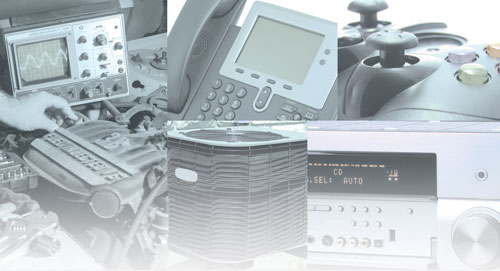Q: What can I expect from such an application?
A: For power supply-based applications, a trimmer, such as the Bourns® Model 3296 Trimpot® Trimming Potentiometer provides a high degree of accuracy, lifetime of 200 rotation cycles, and temperature rating from
‑55 °C to +125 °C. It also features a miniature package that requires a mere 3/8 inch × 3/8 inch. of board space.
Q: Once the trimmer is set, how often does it have to be adjusted?
A: Many applications with pre-calibrated electronics employ a trimmer for subsequent adjustments in response to component variations, as mentioned above. During routine recalibration of services, some trimmers are used in power supplies for accurate output voltage adjustments, ensuring consistent delivery of voltage levels, and to provide a minimal load at the output.
Q: What characteristics should be considered before choosing a trimmer?
A: A good place to start is to review the specifications of each model
for absolute minimum resistance, adjustability, temperature coefficient, shock and vibration, load life, and resistance tolerance (see Frequently Used Terminology below). It is also important to select a quality and experienced trimmer supplier, one known for delivering a proven range of products.
Q: In which applications are trimmers most often used?
A: Communications, signal processing, image processing, and audio processing are just a few of the technologies that digitize data and information for processing, and require a high level of analog precision to interact with real-world phenomenon. In fact, applications that can benefit from trimmers are nearly limitless, and also include automotive; amplifiers; timer/oscillators; voltage regulators; power supplies; consumer electronics; musical instruments; and professional audio and lighting controls, as well as optical, pressure, liquid, and temperature sensors; printers; battery management devices; military products; gaming devices; scanners; and factory automation.

Typical applications for trimmers
Frequently Used Terminology
Absolute minimum resistance - Resistance between the wiper terminal (at center) and each end terminal—to provide a minimum value.
Adjustability - Design for the lowest value— for a more precise resistance adjustment.
Temperature coefficient - The resistance change factor per degree Celsius of temperature change— a lower value means a more stable trimmer operation.
Shock and vibration - The device’s ability to effectively operate in and withstand extreme environments.
Load life - The number of hours at which the device will dissipate a specified level of rated power under operating conditions within a noted variation.
Resistance tolerance - In addition to selecting the resistance value, consider selecting a trimmer with a tighter tolerance, which may require a higher-performing trimmer to match the requirements of certain applications, which place a high priority on accuracy.